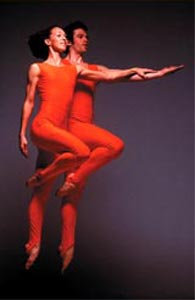“The conflict between science and the humanities is notorious,” writes Nobel-prize-winning theorist Robert Laughlin in the very first footnote of his ambitious new book A Different Universe. The “two cultures” identified by C P Snow, who is cited in the same footnote, may still be with us, but many on both sides of the divide are making genuine efforts to bridge the gap.

Read Saturday, the latest book by Ian McEwan, the foremost literary novelist in the UK today, and you will be immersed in modern neuroscience, Schrödinger’s cat and much more. Read the October 2004 issue of Harper’s Magazine and you will find a short story entitled “The accelerating expansion of the universe” by the American literary giant John Updike. Read Angels and Demons by Dan Brown, the best-selling novelist, and you will find an enjoyable, if unbelievable, tale about CERN, antimatter and the Vatican. These books follow a series of highly successful plays with scientific themes that included Copenhagen, Humble Boy, Oxygen and Infinities (see “Physics meets art and literature” Physics World November 2002 pp29-41; “Science treads the boards” Physics World November 2004 pp16-17).
Later this month, interactions between the worlds of art and science will enter a new dimension when 18 dancers from Rambert Dance Company perform a new work called Constant Speed at Sadler’s Wells theatre in London. Commissioned by the Institute of Physics (which also publishes this magazine), and advised by Ray Rivers, a theorist at Imperial College, the choreographer Mark Baldwin has drawn his inspiration from Einstein’s great breakthroughs of 1905. Dance is all about movement, so Einstein’s work on Brownian motion provides the most obvious and direct inspiration, although there are also allusions to quantum theory and relativity However, Baldwin and Rivers both stress that the work – which lasts 27 minutes – is not intended to be a science lesson for the general public (see “Dancing to the ideas of Einstein”).
So what is in this for the physics community, beyond the chance to experience a form of art that will be foreign to many? First, the collaboration is generating a lot of publicity – more, says Baldwin, than any project he has been involved in before – and this will benefit both sides. Second, Rambert has an extensive outreach programme that involves taking its work into schools: with Constant Speed becoming part of the company’s repertoire, physics will again be reaching audiences that it has not reached in the past. In particular, dance offers a chance to reach that part of the school population that is least interested in the physical sciences – young girls.
Of course, C P Snow was not complaining about the absence of scientific themes in books, plays and so forth when he started the two cultures debate. Rather he was concerned that many in the humanities seemed to take pride in their lack of knowledge of the sciences. However, with the high priests of the arts – McEwan, Updike, Rambert and so on – leading the way, the gap between the two cultures could well start to close.



